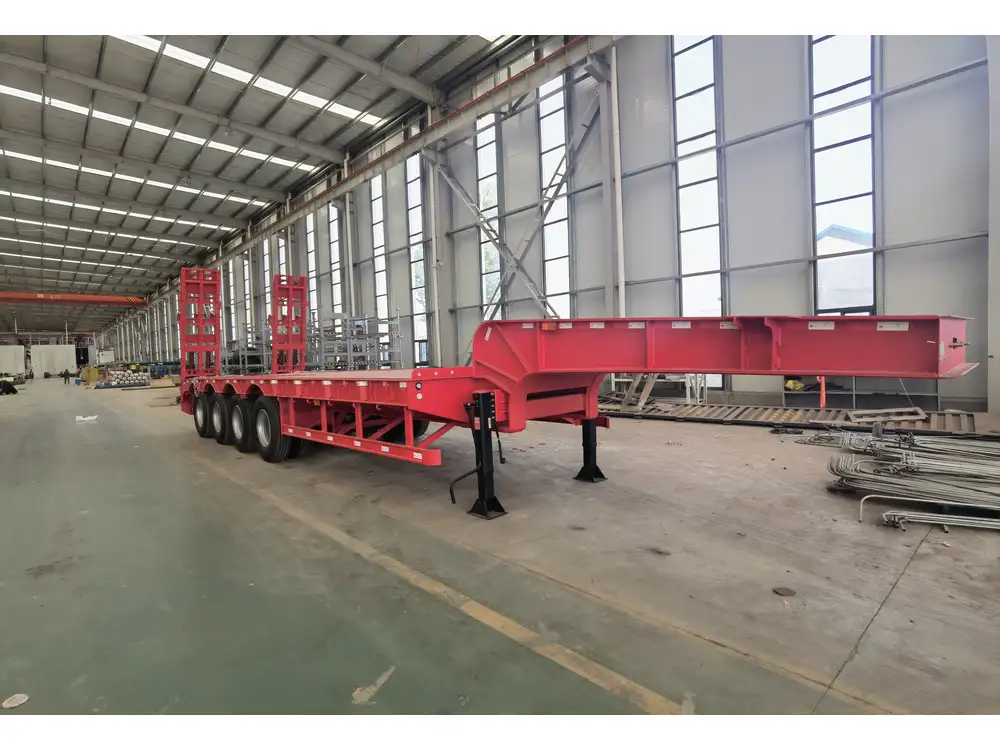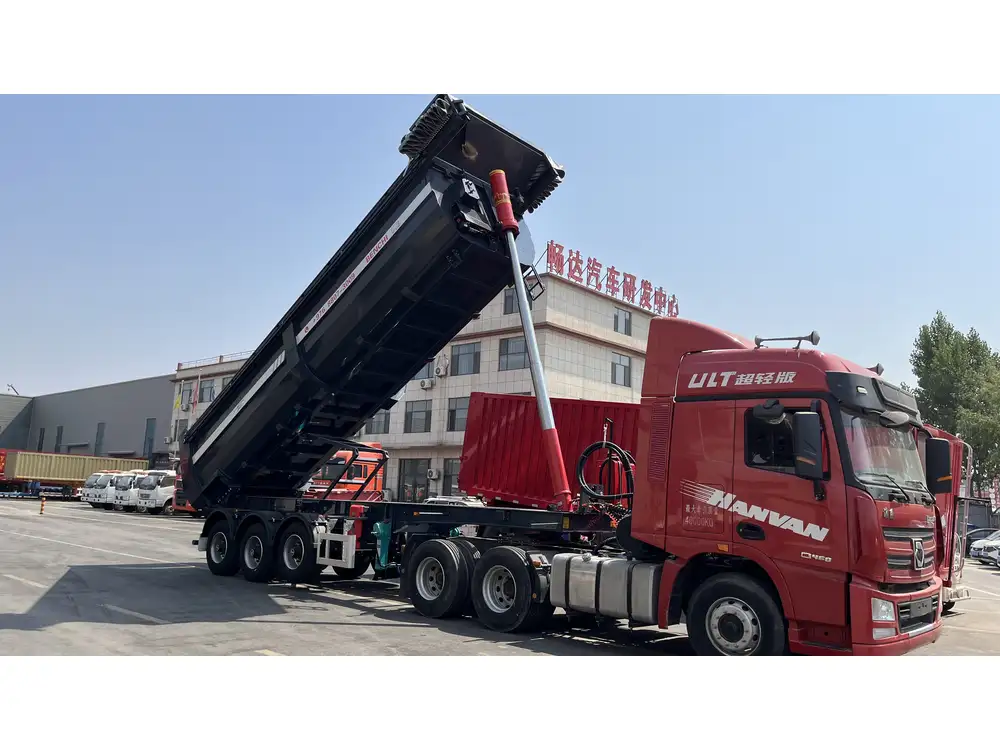In recent years, the automotive industry has witnessed a monumental shift towards electrification, with electric vehicles (EVs) gaining traction for their efficiency and sustainability. One of the queries that frequently arises in discussions about electric vehicles is whether they can tow heavy loads, particularly large semi trailers. In this detailed analysis, we will examine the towing capabilities of the Tesla Model S, addressing its specifications, the mechanics behind towing, potential limitations, and comparisons with traditional towing vehicles.
Understanding Towing Dynamics
Before diving into the specifics of the Tesla Model S, it is crucial to comprehend the fundamental elements of towing. Towing involves the act of pulling a trailer or load using a tow vehicle, which requires a combination of power, torque, and weight distribution. Here, we will clarify several key terms associated with towing:
| Term | Description |
|---|---|
| Towing Capacity | The maximum weight a vehicle can safely tow. |
| Gross Vehicle Weight Rating (GVWR) | The maximum weight of the vehicle plus any load it carries. |
| Tongue Weight | The downward force exerted by the trailer coupler on the hitch. |
| Payload Capacity | The maximum weight a vehicle can carry within its cabin and cargo area. |
Tesla Model S Specifications
The Tesla Model S is celebrated for its powerful dual-motor all-wheel drive, significant acceleration, and advanced technology. When evaluating its towing capability, the following specifications are particularly important:
| Feature | Specification |
|---|---|
| Maximum Towing Capacity | Up to 5,000 pounds (2,268 kg) |
| Maximum Payload Capacity | 1,300 pounds (590 kg) |
| Horsepower | 670 hp (in the Plaid version) |
| Torque | Up to 1,020 lb-ft |
| Battery Range | Up to 405 miles (650 km) |

Can a Tesla Model S Tow a Semi Trailer?
The Tesla Model S boasts a respectable towing capacity of up to 5,000 pounds, allowing it to handle smaller trailers, campers, and utility trailers. However, a semi trailer typically weighs significantly more than this capacity, with even empty trailers often exceeding 10,000 pounds. Given these figures, it becomes clear that the Tesla Model S cannot tow a semi trailer within safe operational limits.
Considerations for Towing with Tesla Model S
1. Towing Capacity Limitations
- It is essential to recognize that exceeding the towing capacity can lead to severe vehicle strain, decreased efficiency, and could compromise safety. For the Model S, this means that any load over 5,000 pounds is not advisable, especially considering that semi trailers, fully loaded, can weigh between 20,000 to 80,000 pounds.

2. Vehicle Stability and Control
- Towing significantly heavier loads impacts vehicle stability. A semi trailer’s longer wheelbase can introduce sway and affect handling. Electric vehicles, including the Model S, have a lower center of gravity due to battery placement, which provides some stability benefits, but those benefits diminish when the load exceeds recommended limits.
3. Brake Performance
- The ability to manage both acceleration and braking is critical when towing. The Tesla Model S is equipped with advanced regenerative braking systems; however, the braking requirements for a semi trailer far exceed those needed for standard towing, potentially leading to brake failure or reduced stopping distances.
Alternatives and Comparisons
For users who need to tow heavier trailers or loads, exploring alternatives to the Tesla Model S is advisable. Let’s look at some comparison points between Tesla’s offerings and traditional internal combustion engine (ICE) vehicles, as well as other electric options.

Comparison Table: Tesla Model S vs. Traditional Vehicles
| Vehicle Type | Max Towing Capacity | Efficiency (Combined) | Electric Range |
|---|---|---|---|
| Tesla Model S | 5,000 lbs | 100 MPGe | 405 miles |
| Ford F-150 (ICE) | 14,000 lbs | 24 MPG | N/A |
| Chevrolet Silverado EV | 10,000 lbs | N/A | 400 miles |
| Rivian R1T | 11,000 lbs | N/A | 314 miles |
Towing Options for Heavy Loads
1. Electric Pickup Trucks
- Electric pickup trucks, such as the Ford F-150 Lightning and the Rivian R1T, are designed with high towing capacities and versatility. They can easily accommodate heavy trailers due to robust engineering and features tailored for towing.
2. Diesel and Gasoline Pickup Trucks
- For users committed to traditional towing, vehicles such as the Ford Super Duty and RAM 2500 offer substantial towing capacities while maintaining efficiency levels that cater to heavy load management.
The Future of Towing with Electric Vehicles
While the Tesla Model S may currently lack the capacity to tow a semi trailer, the horizon looks promising for the evolution of electrified towing solutions. Automotive manufacturers are continually innovating, and the development of electric trucks is a testament to this trend.

Key Features to Look For
When considering electric vehicles for towing heavy loads, pay attention to the following features:
| Feature | Importance |
|---|---|
| Towing Capacity | Ensure it meets your specific towing needs. |
| Battery Size | Larger batteries translate to longer range under load. |
| Torque and Power Delivery | Critical for smooth acceleration and handling heavy loads. |
| Advanced Towing Technologies | Look for features such as trailer sway control and integrated braking systems. |
Upcoming Models
Tesla Cybertruck
- With a promised towing capacity exceeding 14,000 pounds, the Tesla Cybertruck aims to revolutionize the EV towing landscape.
Ford F-150 Lightning
- This electric truck offers up to 10,000 pounds of towing capacity and is equipped with features ideal for trailer management.
Chevrolet Silverado EV
- With a focus on utility and power, this model is designed with a substantial tow rating that caters to both consumer and commercial needs.
Addressing Common Misconceptions

Myth 1: Electric Vehicles Cannot Tow
While it is true that many current electric vehicles have limited towing capacities, this is changing. Many EVs are being developed specifically for towing and utility purposes.
Myth 2: Towing Depletes Battery Life Too Quickly
Although towing does affect range due to the additional weight, advancements in EV technology are improving efficiency, including regenerative braking that can recapture some energy.
Myth 3: Towing is Only for Pickup Trucks
This myth overlooks the variety of vehicles currently available that can tow efficiently, including SUVs and some compact trucks designed for towing capabilities.

Conclusion: Making an Informed Towing Decision
While the Tesla Model S is an outstanding example of innovation within the electric vehicle sphere, when it comes to towing heavy loads like semi trailers, the limitations of its capacity render it unsuitable. For those who require high towing capabilities, exploring options within electric trucks or traditional vehicles altogether is the best path forward.
As the market for electric vehicles continues to grow and evolve, so too will the functionalities offered. Awareness of these advancements and making informed choices based on needs and specifications will empower consumers to enjoy the benefits of electric towing in the near future.
By staying informed on vehicle capabilities and industry trends, users can enjoy the efficiency and sustainability of electric vehicle technology while also meeting their towing requirements with confidence.



